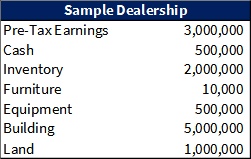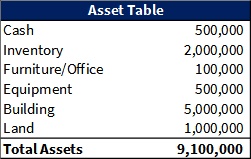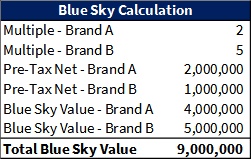by: Walter Gerstel and Cade Abreu
Overview
Dealerships establish agreements with manufacturers to buy and sell vehicles and provide repair/maintenance services. Dealers are incentivized to sell the manufacturer's products through incentive programs, subsidized advertising, bonuses, and special discounts. They can carry goods from competing manufacturers, but in most cases, one brand will be dominant. There is also protection put within manufacturer agreements that will prevent two dealerships of the same brand from opening close to each other.
Dealerships do not pay an upfront fee to manufacturers and use floorplan financing to acquire inventory. Purchases of inventory for new car dealerships, the largest dealership market, accounted for ~73% of industry revenue. Industry operators are reliant on salespeople, technicians, and office workers. Thus, making wages the second largest cost dealerships occur, ~10% of industry revenue.
The industry has a very low concentration and is fragmented, with the 4 largest companies only expected to make up ~5% of revenue in 2021, resulting in high M&A activity. While other forms of dealerships such as trucks or boats can have nuance, they follow similar industry structures apart from the RV dealership industry having one much large player compared to others in the space with Camping World Holdings having ~19% market share.
Key Drivers & Recent Trends
Dealerships sell products that are usually expensive for consumers. To get an understanding of what affects demand, we need to know what affects the consumer's decision in making 'a high price purchase. The Consumer Confidence Index can give a good indication of the probability of a consumer's willingness to purchase a boat, car, or RV. Currently, the index is 117.2 in June and rose from 95.2 in February. The index is at its highest since the start of the pandemic in March 2020, illustrating a recovering consumer optimism that will result in greater demand for luxury items.
Additionally, industry revenue can grow at a steady rate when disposable income levels are high. Disposable income reached an all-time high of 19,210.5 USD in January 2021 and grew 3% over the past 5 years. Over the next 5 years, per capita disposable income is forecasted to increase at ~2.1%. Also, interest rates are low with the 10-Year Treasury Yield sitting at 1.37% as of 7/06/21 and are expected to remain low into the foreseeable future. It will be cheaper for consumers to finance their purchases and industry operators will see increased profitability due to fewer costs associated with financing new vehicle inventory.
While COVID-19 did create worry amongst consumers and disrupted many manufacturers' supply chains, two recent factors have allowed the industry to not only stay afloat but to rally. Ample fiscal and monetary policy created a backstop to the industry and consumer confidence. The Federal Reserve keeping rates low allowed for cheaper borrowing for businesses and programs like the PPP filled budgetary gaps that were a direct result of COVID-19 such as payroll expenses. The other factor has been that the quarantine itself put a halt to many manufacturing lines. While this created supply chain issues, it also cut the supply of new and used cars circulating in the market. This drove up prices and margins for the dealerships because of the observed lag in getting operations back to pre-COVID levels and sourcing the necessary materials.
Valuation
Valuing a dealership is different from other industries. The industry standard within dealerships is to take the Net Assets of the company and adding them with what is called the Blue Sky Value. We will use an example of a sample dealership below to explain these two concepts.

Breaking this down in a simple manner, the former can be thought of as the value of your tangible assets such as real estate, equipment, and cash on hand without taking into account the debt of the company in the buyer's valuation. The reason for this is because almost all transactions within the dealership space are asset sales, so the debt must be retired before being transferred to another entity. That is not to say the seller will not take it into account when thinking of the final payout they receive. Below you will see a list of the assets alongside the Blue Sky calculation.


Blue Sky/Goodwill (interchangeable) can be thought of as the intangible value of a dealership, such as a dealership's reputation, location, or workforce ability. Blue Sky is typically calculated as a multiple of Net Pre-Tax Earnings or EBITDA (earnings before interest, tax, depreciation, and amortization) of a dealership. This multiple is a market-based approach based on the brands the dealership sells. Each brand has a different multiple and thus revenue generated per brand would have a different multiple attached to it. Given our example, let us say with the Pre-Tax Earnings of $3MM that $2MM of that comes from Brand A with a multiple of 2x and $1MM comes from Brand B with a multiple of 5x, the Blue Sky Value would be $9mm (2MM x 2 = 4MM and 1MM x 5 = 5MM). Many new car dealerships have exclusive agreements with manufacturers, so these scenarios are less likely. This would be more common in multi-brand kind of dealerships like commercial trucks or boats.
Given these two totals, we can come up with a valuation of $18.1MM for our sample dealership. While other valuation methods can be attempted, the industry standard is to use this method. Then further negotiation and due diligence can be had for values and term structures for the transactions such as lease considerations, earn-outs, etc. but this provides a good starting point, especially in the wake of some of the industry breakdowns, nuances, and trends covered in this article.

